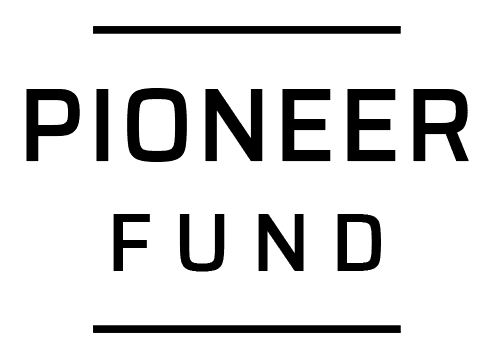A new chapter of period prediction
Temperature changes and menstrual cycle tracking

As a brief introduction, the menstrual cycle is separated into the follicular phase preceding ovulation and the luteal phase post-ovulation. Menstruation occurs during the first part of the follicular phase. A lot of useful information can be extracted from menstrual cycle tracking. For example, the fertility window, optimization of athletic performance and training and understanding of the change in energy levels during different phases. Tracking allows women to stay informed and adapt their activities and nutrition to suit the different phases better. Subtle changes in the cycle can be indicative of underlying health problems. Some doctors advocate for inclusion of period metrics as the 5th vital sign used to track overall health along with the pulse rate, body temperature, respiration rate and blood pressure.
Variability between women and cycle-to-cycle variability compromises prediction accuracy, creating anxiety around period tracking. A cycle length of 28 days, previously accepted as the norm, was shown to only be true for 13% of the population [1]. Based on this arbitrary cycle length, most available apps predict menstruation date and ovulation window. Although, Clue and Flo adjust their algorithm on each individual cycle length and additional symptoms producing the most accurate and consistent predictions.
A new generation of period tracking is going to be based on temperature data without the need for daily manual logging, based on individual's biometric data allowing for the next level of personalisation. A biphasic basal core body temperature (CBT) pattern with 0.3°C - 0.7°C higher CBT in the luteal phase after ovulation is a well-established fact [2]. This rhythm was described for the first time more than 100 years ago [3]. This is because estrogens lower, and progestins raise body temperature, although the thermoregulatory effects of these hormones are not well understood [2]. Period tracking based on temperature will require looking at the monthly trend with a bi-phasic pattern rather than daily fluctuations.
Distal Body Temperature (DBT) which is measured on the finger or the wrist at night is a good measure of CBT [4]. You may wonder why at night specifically? Data collected at night is less likely to be affected by environmental changes, changes in activity, stressors or metabolic changes. Current technology allows narrow enough temperature monitoring to detect meaningful changes. Oura has based its Period Prediction algorithm on collecting skin temperature data, capturing the follicular and luteal phases' bi-phasic temperature pattern [5].
Using Heart Rate Variability and Temperature together
Heart Rate Variability (HRV) can be combined with temperature measurement for period tracking. Parasympathetic input to the heart dominates during the follicular phase, lowering resting heart rate and elevating HRV. Sympathetic input to the heart dominates during the luteal phase, elevating heart rate and depressing HRV [6]. This decrease in HRV from follicular to the luteal cycle phase has been confirmed with a large meta-analysis based on over 1000 participants [7].
Prediction of the fertility window
The most used fertility tracking method is the calendar method, which identifies ovulation as 14 days before the start of the next menstruation. Due to natural variation from cycle to cycle even in women with regular menstruation, using menstrual cycle dates alone is an inaccurate method to estimate the fertility window [8].
To identify their fertility window more accurately, women monitor their Luteinizing hormone (LH) level as a predictor for timing of ovulation. Hormone peaks ~12h before ovulation; this surge is identified from urine using home ovulation kits [9]. Alternatively, women can take their oral temperature upon waking up, where an increase of 0.5° C or more suggests ovulation has just occurred. This temperature difference can be used as a retrospective indicator of an ovulatory cycle to allow the woman to understand her own ovulation pattern [10].
A recent study showed the possibility of anticipating the LH surge at least 2 days prior to onset using DBT and HRV rather than postfactum like in oral temperature monitoring [6]. The Oura ring was shown to capture the significant distal skin temperature drop around ovulation due to high estrogen levels; although this is less well studied, it is supported by some laboratory studies [11]. Validity of using DBT from wearables for fertility information is further verified by the collaboration between Oura and the first FDA-cleared birth control app, Natural Cycles [5].
Future directions: pregnancy detection and monitoring
Future applications may also include a diagnostic sign of pregnancy. In the event that pregnancy occurs and menstruation does not appear when expected, the basal temperature does not return to its preovulatory level which can suggest pregnancy before a positive test.
A study still in review based on data collected by WHOOP on 241 pregnancies has uncovered a new digital biomarker for pre-screening for premature birth. This is based on a reversal of the trend in temperature 7 weeks prior to delivery. Importantly this should solely serve as an indicator to consult a healthcare professional rather than reach any medical diagnosis [12].
Temperature-based tracking has its own caveats. Accurate prediction of the fertility window and start of the period requires at least two months worth of consistent data recording. Additionally, changes induced by birth control are different from the natural cycle which may be due to different clearance rates of synthetic hormones. It also may be explained by the different estrogen and progesterone ratios in different contraceptives. Therefore, DBT method is only applicable for natural cycle tracking [13].
Continuous monitoring by wearables of metrics such as HRV, HR, blood oxygenation, sleep quality, temperature make data available and can be productively used by research institutes to close the gap in understanding of foundational female biology. As an example, it is still unclear how exactly the core body temperature is mediated by the changing levels of hormones. Some evidence supports the direct effect of progesterone and estrogen on the preoptic area of the hypothalamus. New period tracking methods allow understanding of women's health beyond the reproductive metrics. This becomes increasingly important considering present legislative setbacks, contraceptive access and historic exclusion of females from biological research.
References
[1] Bull, J. R., Rowland, S. P., Scherwitzl, E. B., Scherwitzl, R., Danielsson, K. G. & Harper, J. (2019) Real-world menstrual cycle characteristics of more than 600,000 menstrual cycles. NPJ Digital Medicine. 2 (1), 83.
[2] Buxton, C. L. & Atkinson, W. B. (1948) Hormonal factors involved in the regulation of basal body temperature during the menstrual cycle and pregnancy. The Journal of Clinical Endocrinology. 8 (7), 544–549.
[3] Marshall, J. (1968) A field trial of the basal-body-temperature method of regulating births. The Lancet. 292 (7558), 8–10.
[4] Kräuchi, K. (2002) How is the circadian rhythm of core body temperature regulated? Clinical Autonomic Research. 12 (3), 147–149.
[5] Maijala, A., Kinnunen, H., Koskimäki, H., Jämsä, T. & Kangas, M. (2019) Nocturnal finger skin temperature in menstrual cycle tracking: ambulatory pilot study using a wearable Oura ring. BMC Women's Health. 19 (1), 1–10.
[6] Grant, A. D., Newman, M. & Kriegsfeld, L. J. (2020) Ultradian rhythms in heart rate variability and distal body temperature anticipate onset of the luteinizing hormone surge. Scientific Reports. 10 (1), 20378.
[7] Schmalenberger, K. M., Eisenlohr-Moul, T. A., Würth, L., Schneider, E., Thayer, J. F., Ditzen, B. & Jarczok, M. N. (2019) A systematic review and meta-analysis of within-person changes in cardiac vagal activity across the menstrual cycle: implications for female health and future studies. Journal of Clinical Medicine. 8 (11)
[8] Ali, R., Gürtin, Z. B. & Harper, J. C. (2021) Do fertility tracking applications offer women useful information about their fertile window? Reproductive BioMedicine Online. 42 (1), 273–281.
[9] Hoff, J. D., Quigley, M. E. & Yen, S. S. (1983) Hormonal dynamics at midcycle: a reevaluation. The Journal of Clinical Endocrinology & Metabolism. 57 (4), 792–796.
[10] Baker, F. C., Siboza, F. & Fuller, A. (2020) Temperature regulation in women: effects of the menstrual cycle. Temperature. 7 (3), 226–262.
[11] Cagnacci, A., Volpe, A., Paoletti, A. M. & Melis, G. B. (1997) Regulation of the 24-hour rhythm of body temperature in menstrual cycles with spontaneous and gonadotropin-induced ovulation. Fertility and Sterility. 68 (3), 421–425.
[12] Jasinski, S. R., Rowan, S., Presby, D. M., Claydon, E. & Capodilupo, E. R. (2022) Wearable-Derived Maternal Heart Rate Variability As A Novel Digital Biomarker of Preterm Birth. medRxiv. 2022.11. 04.22281959.
[13] Sims, S. T., Ware, L. & Capodilupo, E. R. (2021) Patterns of endogenous and exogenous ovarian hormone modulation on recovery metrics across the menstrual cycle. BMJ Open Sport & Exercise Medicine. 7 (3), e001047.





